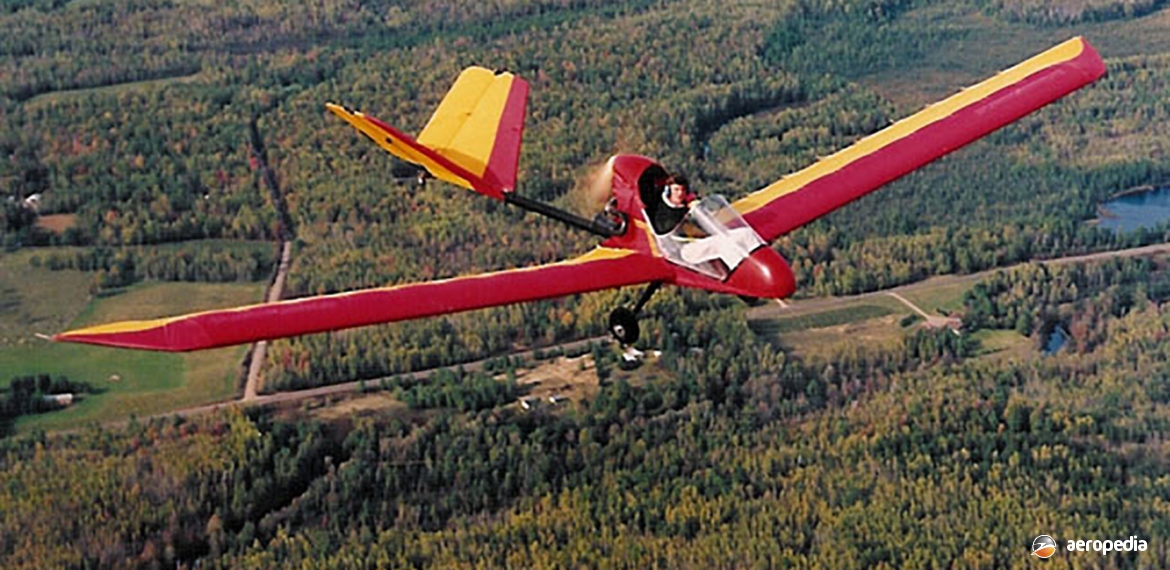Photograph:
An American Cloud Dancer (US Aviation)
Country of origin:
United States of America
Description:
Single-seat light sport ultralight self-launched glider
Power Plant:
One 21 kw (28 hp) Rotax 277 single-cylinder, two-stroke, air-cooled engine
Specifications:
- Wingspan: 12.19 m (40 ft)
- Length: 5.2 m (17 ft)
- Height: 1.37 m (4 ft 6 in)
- Wing area: 12.3 m² (132 sq ft)
- Cruising speed: 80 km/h (50 mph)
- Stalling speed: 43 km/h (27 mph)
- Rate of climb: 183 m/min (600 ft/min)
- Range: 402 km (250 miles)
- G limited: +4.2/-2
- Max glide ratio: 15:1
- Fuel capacity: 19 litres (4.2 Imp gals )
- Take-off run: 61 m (200 ft)
- Empty weight: 114 kg (252 lb)
- Loaded weight: 236 kg (520 lb)
History:
The Cloud Dancer was designed by Messrs Erwin Rodger and Roger Delura as a single-seat self-launched glider for the US market and was marketed by UYS Aviation. It was aimed at meeting US FAR 103 Ultralight Vehicle regulations which meant an empty weight of 115 kg (254 lb). It was a cantilever mid-wing aircraft with a tailwheel undercarriage, an open cockpit and a V-tail, the engine being mounted in the pusher configuration.
Construction was of aluminium and fibreglass, the wing having an aspect ratio of 12:1, and was built around a D-cell leading-edge, the remainder of the wing being fabric covered supported by fibreglass battens. Controls were three axis using spoilerons for roll control and it was fitted with air brakes. The undercarriage was of fibreglass. The wings could be removed for transport and hangarage.
The design was introduced to the market in kit form for construction by amateur builders in 1983 and examples were supplied around the world, production eventually concluding in 1994. However, production of a re-designed variant with a conventional tail commenced with US Aviation Cumulus in 1995. It was demonstrated at the Sun ‘N Fun fly-in in Florida in 1996 and was to be produced by TEAM Aircraft. However, this company was unable to produce the aircraft and AeroDreams was formed to produce it under licence to US Aviation.
Power was provided by a Rotax 277 engine, using a 2.24 to 1 Rotax reduction drive, and had an electric starter, thus allowing the pilot to switch off the engine and restart it in the air.
Examples were imported to this part of the world, one becoming ZK-KKK (c/n MAANZ-469) in February 1992.

